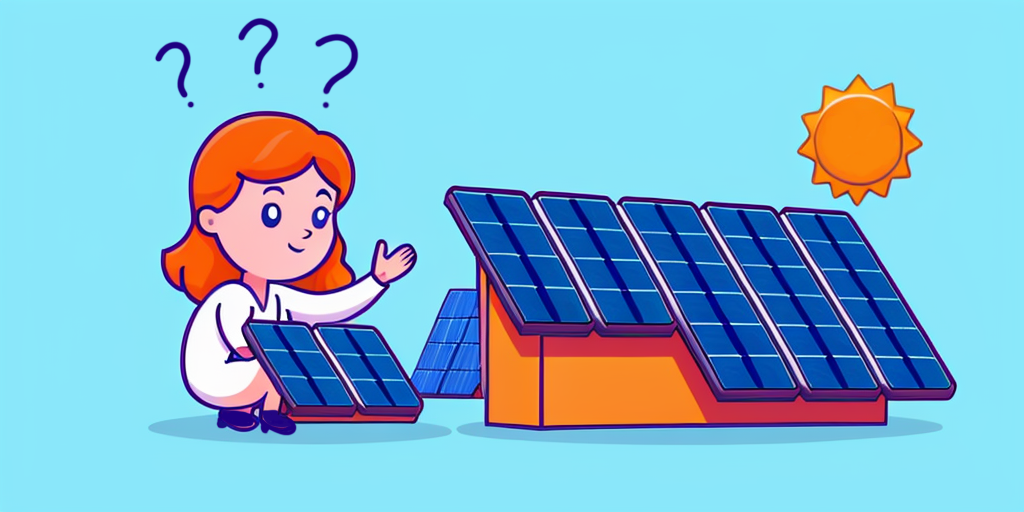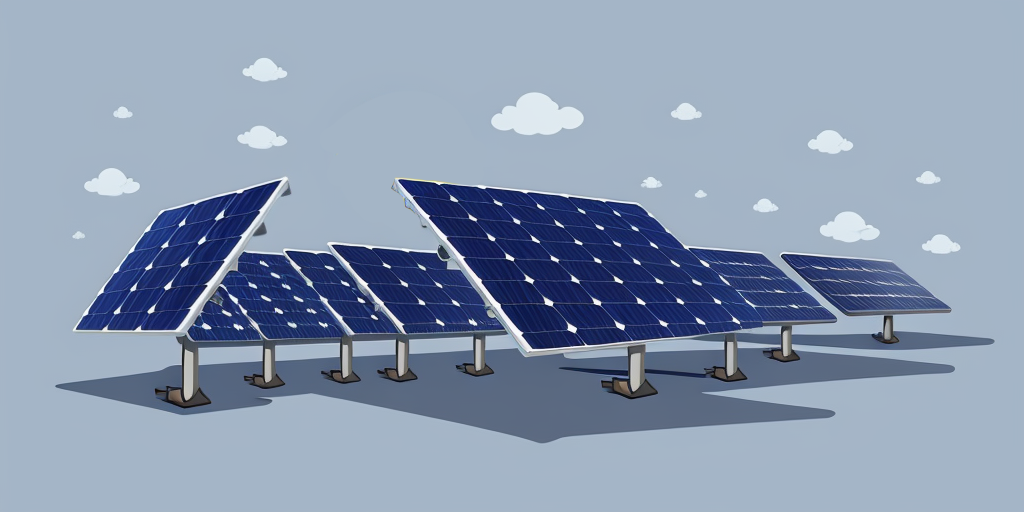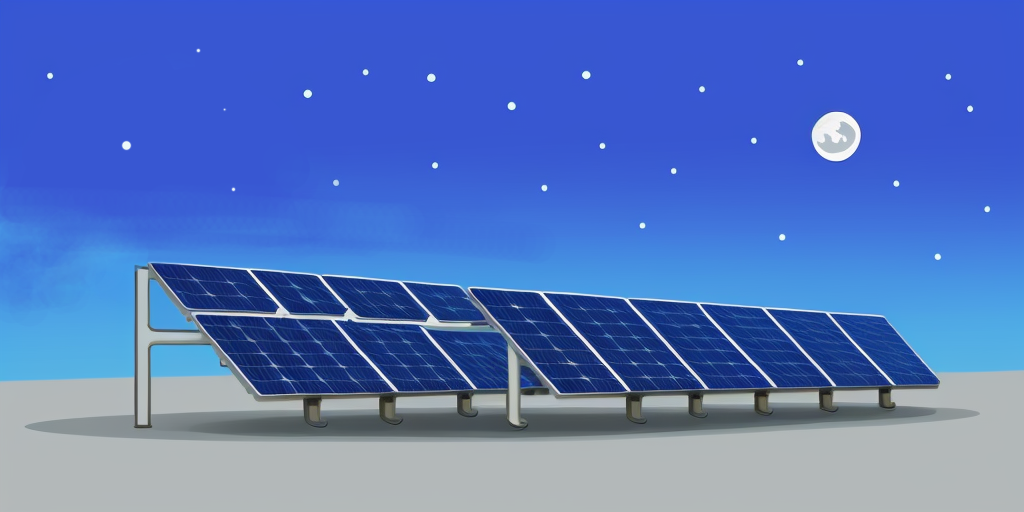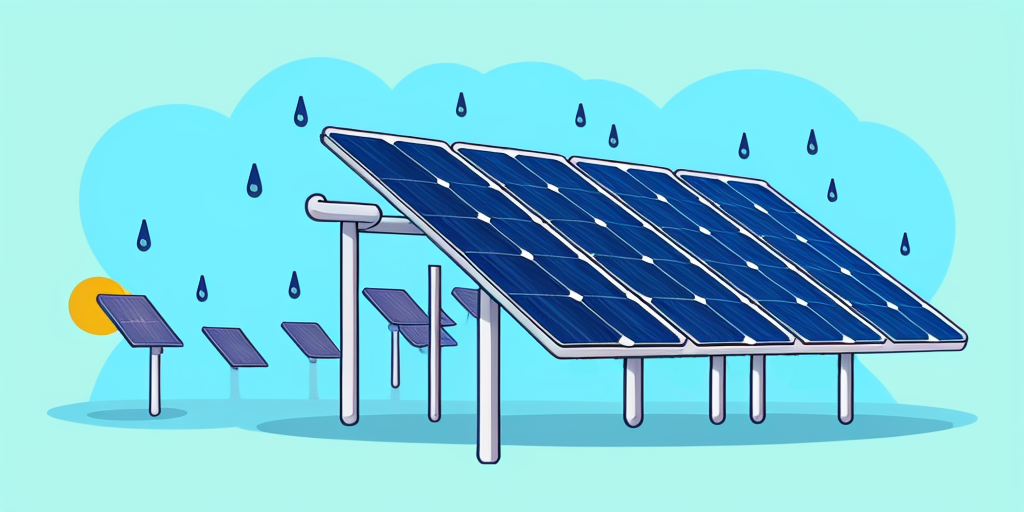The architectural landscape of our towns and cities is changing. Today, an increasing number of rooftops are garnished with the sleek arrays of solar panels, underscoring a shift towards renewable energy sources in our battle against climate change. Yet, this brings up certain questions about their functionality and efficiency. For example, have you ever wondered what your solar panels are up to when the sun goes down? Are they dreaming about more sunny days or perhaps, like us, enjoying a well-deserved break? Joking aside, this question raises a critical aspect of solar energy— do solar panels work at night? How do solar panels perform in areas with cloudier climates? These are questions that frequently arise when considering the viability of solar energy. In this article, we will explore these aspects in detail to gain a deeper understanding of solar panel functionality and their capabilities in various weather conditions.
Over the last decade, solar panels have seen a meteoric rise in popularity. As of 2022, the United States alone now boasts enough solar panels to power 22 million homes. Yet, despite their increasing prevalence, the complex inner workings of these eco-friendly powerhouses can remain a mystery to many. Solar panels, at their core, work by converting sunlight, or more specifically the energy of light (photons), into electricity. They achieve this via a remarkable process that involves the principle of photovoltaics and the utilization of semiconducting materials, usually silicon.

A solar panel comprises numerous solar cells, each a small sandwich of semiconductor material. These cells have a positive layer and a negative layer, which together create an electric field, just like in a battery. When sunlight hits a solar cell, it excites the electrons in the semiconductor material. In this state of excitement, the electrons are knocked loose from their atoms and start to flow. This flow of electrons is what we know as electricity. However, the electricity produced at this stage is in the form of direct current (DC), which is not compatible with most home appliances that run on alternating current (AC). The inverter is the essential component that converts the DC electricity into AC electricity.
As you can imagine, the production of electricity by solar panels is directly proportional to the intensity of light they receive. Thus, the panels are most productive around midday when the sunlight is at its zenith. However, this period often coincides with a time when electricity consumption is relatively low, leading to an overproduction of electricity. This surplus power isn’t wasted, though. Instead, it’s either stored locally in batteries for later use, particularly at night or during power outages, or it’s channeled back into the electric grid, a practice known as net metering. With net metering, your electric meter tracks the net amount of electricity you draw from or supply to the grid, providing a simple way to make the most out of your solar installation.
Understanding the science behind solar panels helps to appreciate the ingenuity of this technology in harnessing sunlight, a renewable and abundant form of energy, to generate electricity. It’s important to also consider that solar panel efficiency can vary due to factors such as the quality and size of the solar cells, the semiconductor materials used, and the amount of sunlight received. Commercial solar panels typically exhibit efficiencies between 15-20%, although some high-end panels can exceed 22%. Additionally, solar technology is continuously advancing. Newer types of solar cells, including thin-film and multijunction cells, are pushing the boundaries of efficiency and versatility. Researchers are also exploring innovative materials like perovskites that have the potential to revolutionize solar cell design in the future. As our understanding and technology advance, so too will the efficiency and capabilities of solar panels, making them an increasingly vital part of our energy future.
A common question about solar panels is how they perform under cloudy or overcast conditions. While it’s true that solar panels work best under direct sunlight, they still function under cloudy conditions, just at a reduced efficiency. Depending on the thickness of the cloud cover, you can expect solar panels to produce between 10-25% of their normal power output.

A surprising fact is that solar panels don’t perform their best in extremely hot climates. The efficiency of a solar panel is determined by how well it converts sunlight into electricity, and this process can be hindered by excessive heat. When the surface temperature of a solar panel exceeds 77 degrees Fahrenheit (25 degrees Celsius), its efficiency decreases. This is a consequence of the properties of the semiconductor materials embedded within the solar cells. As these materials heat up, their ability to excite electrons – a fundamental process in generating electricity – diminishes. Thus, despite abundant sunlight, scorching temperatures can ironically dampen a solar panel’s performance.
Despite the reduced performance under cloudy and overly hot conditions, solar power is still a viable option in many areas. Cities like Seattle and Portland, for instance, despite their cloudy weather, have thriving solar power scenes. Their long, mild summer days help balance out the lower output during the cloudy winter months.
Solar panels are effectively dormant at night, but not for the reasons you might think. It’s not because they’re tired from a day of producing electricity, rather, it’s because of the simple fact that they rely on sunlight to generate power.
As mentioned earlier, at the core of every solar cell is a semiconductive material, usually silicon, which is doped with impurities to create a positive layer and a negative layer. When sunlight hits the solar cell, it excites the electrons in the silicon. This excitement creates an electrical imbalance between the positive and negative layers, and it is this imbalance that leads to the flow of electricity.

At night, this crucial light-induced electron activation cannot happen because there’s no sunlight to stimulate the electrons. The lack of photon impacts leads to an absence of the electrical imbalance that drives power production. Even though solar panels can pick up small amounts of light from sources like the moon or street lights, the intensity of this light is too weak to excite the electrons enough to generate a significant amount of electricity. Hence, at night, solar panels go into a “sleep” mode.
But does this mean that homes equipped with solar installations are plunged into darkness after sunset? Thankfully, not. While our beloved solar panels might be catching some Z’s, they’ve made sure that the hard work done during the day doesn’t go to waste. This is where energy storage solutions, like solar batteries, and processes like net metering come into play.
With the surge in solar panel installations, solar batteries have emerged as a crucial accessory. These batteries function as a reliable storage solution for the surplus electricity produced by your solar panels during peak sunlight hours. This excess energy can then be utilized when the sun goes down and the panels halt their energy production.
Modern solar batteries such as the Tesla Powerwall 2, LG Chem RESU, and SonnenCore+ have revolutionized the way we use and store solar power. These devices not only provide substantial storage capacity but also offer smart capabilities. They can store enough energy to power an average home throughout the night, and in some cases, even for several consecutive days if necessary, depending on energy usage and the size of the battery system.
Furthermore, by storing surplus energy, solar batteries make households less reliant on the grid, providing energy security and autonomy. The energy stored can be used during peak tariff periods, saving money on electricity bills. Some advanced solar batteries also offer features like blackout protection, ensuring your lights stay on during power outages.
Net metering, also known as Net Energy Metering (NEM), serves as another effective approach to handle the excess power your solar panels generate. This system allows homeowners to feed their surplus solar energy back into the shared electrical grid instead of storing it locally in batteries.
Under net metering programs, utility companies monitor the energy you contribute to the grid through a meter that registers the power your solar system produces. When your panels generate more electricity than you need, the extra power is directed back to the grid, spinning the meter backwards.
In return, you receive credits on your electricity bill. These credits can be redeemed when your solar panels aren’t producing enough electricity, such as at night or during periods of low sunlight. You draw power from the grid, but instead of paying for it, you offset the cost with the credits you’ve earned.

Depending on your location and local policies, you may even receive a financial return for the additional energy your solar setup feeds into the grid. This makes net metering not only an energy solution but also a potential source of income for solar owners.
Together, battery storage and net metering provide effective solutions to the challenge of solar power’s intermittent nature. They ensure a steady supply of green energy even when solar panels aren’t actively producing electricity, maximizing the benefits of solar installations.
As previously mentioned, solar panels do operate on cloudy days, but their output is reduced. They generally produce between 10-25% of their maximum output on cloudy days. However, one potential solution to the problem of reduced solar panel effectiveness on cloudy or rainy days is the utilization of AC solar panels. These panels possess a unique feature that bolsters their performance even in shaded or overcast conditions. Unlike traditional solar power systems, which rely on a central inverter and are susceptible to power decrease if even a single panel in a string is shaded, AC solar panels adopt a different strategy. Each AC solar panel operates independently, meaning the energy output of the entire system is not compromised if one panel gets partially covered, say by fallen leaves or passing clouds. This characteristic makes AC solar panels exceptionally resilient in cloudy or shaded environments, ensuring that the power generation remains stable and consistent, regardless of individual panel conditions.
Snow presents a different kind of challenge for solar panels. When a layer of snow covers solar panels, it prevents light from reaching the solar cells, effectively halting power production. However, most panels are installed at an angle, which helps the snow slide off. Moreover, the dark surface of the panels absorbs heat, helping to melt the snow. Once the snow is removed, solar panels can produce electricity even in cold, sunny winter conditions. In fact, solar panels can be more efficient in colder temperatures as the cooler conditions reduce thermal losses and voltage drops.
Rainy days often come with increased cloud cover, which, as mentioned earlier, reduces the intensity of sunlight that reaches the solar panels. The less intense light consequently diminishes the electrical generation of the panels. However, solar panels can still operate under these conditions, harnessing the ultraviolet rays that penetrate the rain and clouds.

Interestingly, rain can even provide a side benefit to solar panels. Over time, dust and debris can accumulate on the solar panels, slightly hindering their efficiency by blocking some sunlight. Rain, acting as a natural cleanser, can wash away this accumulated dust and debris, aiding the solar panels to maintain their optimal performance.
Recent advancements in solar technology have paved the way for exciting possibilities in power generation even in the absence of daylight. These breakthrough developments, including power generation at night and during rainfall, have the potential to transform solar energy into a 24-hour power source, bringing us closer to a future reliant on renewable energy.
One notable innovation is the creation of solar panels capable of producing electricity at night. This achievement builds upon the concept of radiative cooling, a natural process where materials release heat into the night sky after absorbing sunlight during the day. By leveraging the temperature difference between a solar panel and the surrounding air, researchers have successfully generated power without the need for sunlight.
At Stanford University, a team of electrical engineers led by Shanhui Fan combined a photovoltaic cell with a commercial thermoelectric generator (TEG) module to achieve this breakthrough. TEGs are devices that convert temperature differences into electrical power. In their integrated system, the TEG is positioned beneath the solar cell, with an aluminum sheet transferring heat from the cell to the TEG. The other side of the TEG is connected to the surrounding air via a heat sink. This setup allows the heat flow from the ambient air to the cooler solar cell to be harnessed for electricity generation.
While the current power output during nighttime is approximately 50 milliwatts per square meter (mW/m²)—significantly lower than the 100 to 200 watts per square meter produced under sunlight—it shows promising potential. This output is already economically viable for low-power applications such as LED lighting, charging mobile devices, or powering small sensors.
In favorable conditions, such as hotter and drier climates, it is estimated that the same setup could potentially yield up to 100 mW/m². Moreover, further improvements can be made. The solar cells used in the Stanford experiment were not specifically optimized for radiative cooling. By fine-tuning the emission wavelength of the heat radiated by these cells, their cooling efficiency at night can be enhanced, leading to a greater temperature difference and increased power generation by the TEG.
One challenge to widespread adoption is the relatively high cost of TEGs, which are typically made of expensive materials. However, when compared to an alternative setup where solar power is generated during the day and stored in batteries for nighttime use, Fan’s team believes that their TEG-integrated solution could prove more cost-effective in the long run, especially considering the longer lifespan of TEG modules compared to typical batteries.
These remarkable advancements in solar energy are gradually ushering in a more sustainable and energy-efficient future. As ongoing research and development continue to refine and perfect these technologies, the vision of a world predominantly powered by renewable energy sources is becoming increasingly within reach.
It’s clear that solar panels have far more to offer than just day-time electricity production. Their ability to make use of daylight hours is certainly impressive, but equally important are the systems in place for cloudy days and nighttime use. We’ve seen how advanced solar battery storage systems and net metering methods ensure that homes with solar installations continue to have power, even when the sun isn’t shining.
We’ve also uncovered exciting innovations in solar technology that can change the way we perceive solar energy. The advent of solar panels that can harness energy from temperature differences at night and the conversion of raindrop kinetic energy into electricity represent considerable advancements. Such innovations hint at a future where solar power is not only a primary source of electricity but a round-the-clock one, making our energy consumption greener and more sustainable.
Indeed, it is. According to the Environmental and Energy Study Institute, even on cloudy days, solar cells can yield up to 80% of their potential energy. Therefore, the presence of a generally cloudy climate should not discourage homeowners from considering solar panel installations. In fact, the rain associated with cloudy conditions can serve to clean your panels by removing accumulated dust and grime, thereby promoting their efficiency.
On a cloudy day, the efficiency of solar power generation may experience a reduction ranging from 10% to 25% compared to energy production levels on a sunny day.
Stay a while and read more posts like this
In recent years, Europe has witnessed a remarkable surge in the adoption of solar panels, marking a pivotal shift towards renewable energy. Data from the...
Renewable Energy, Solar Energy, Solar Energy Basics, Solar Technology
“Unlock the Truth: Get the Facts on Solar Energy!” Introduction Solar energy is becoming increasingly popular as a renewable energy source, but there are...
Imagine a world where you’re able to cut your monthly energy expenditure substantially. A reality where your home isn’t reliant on finite,...